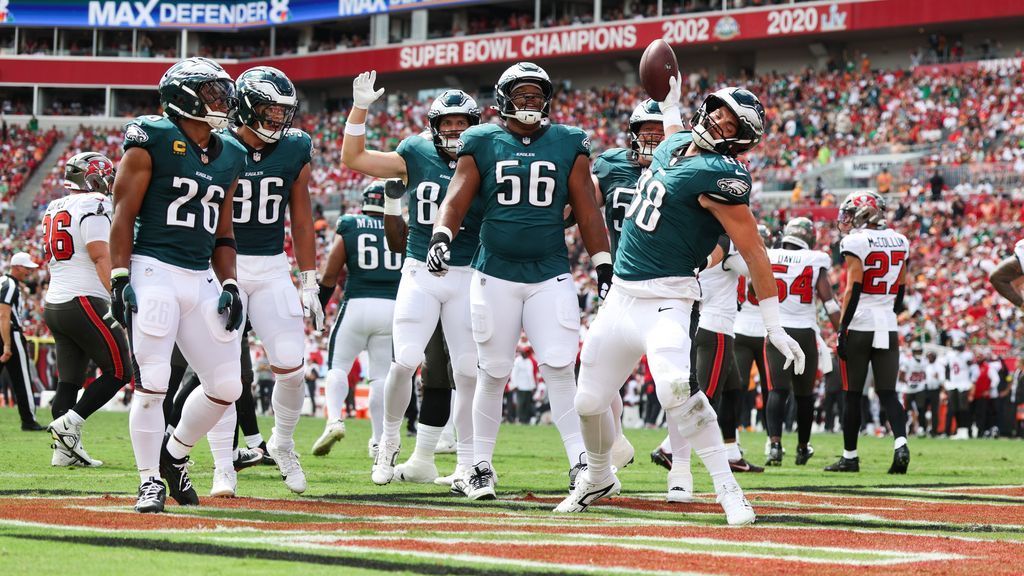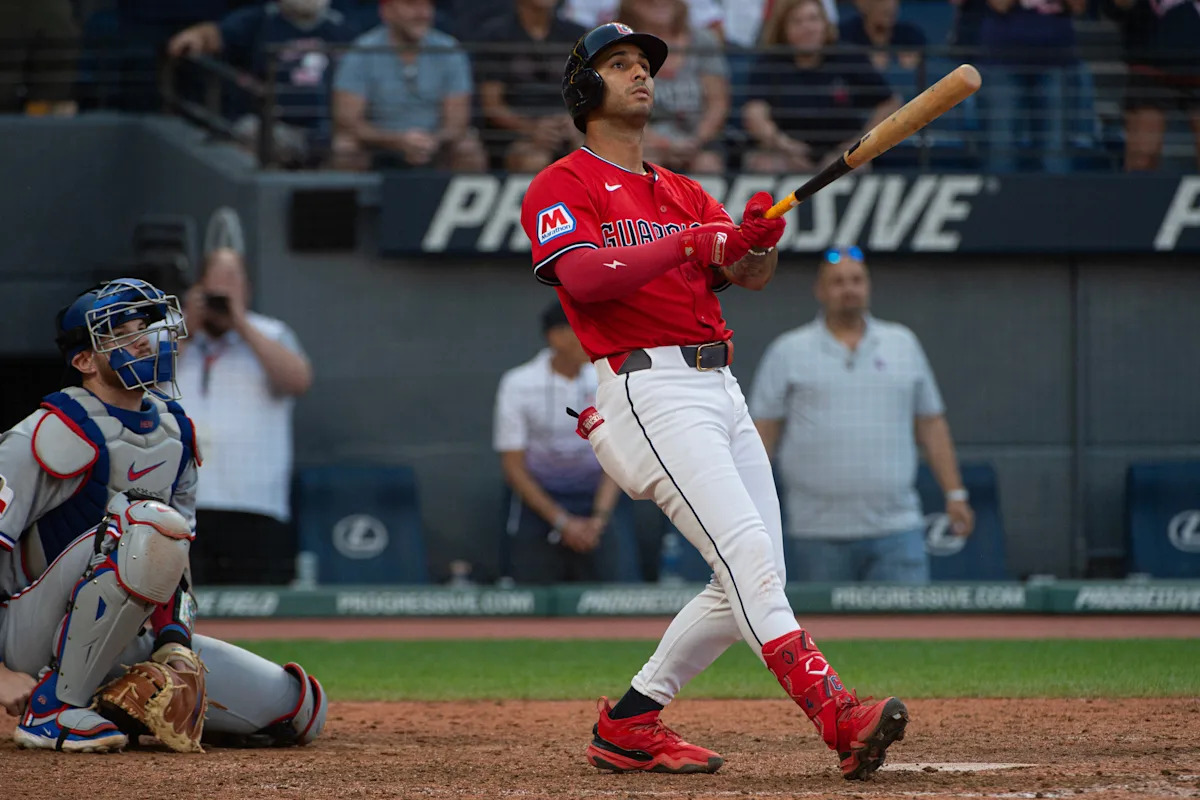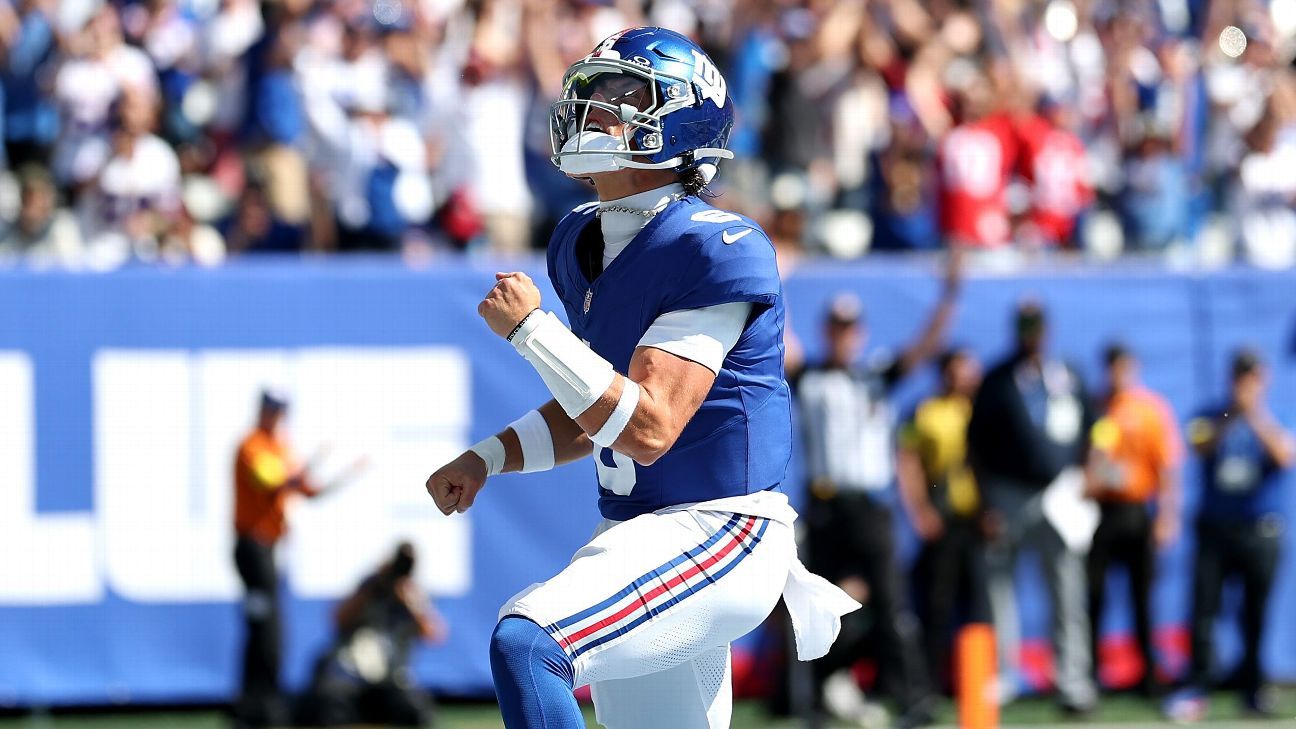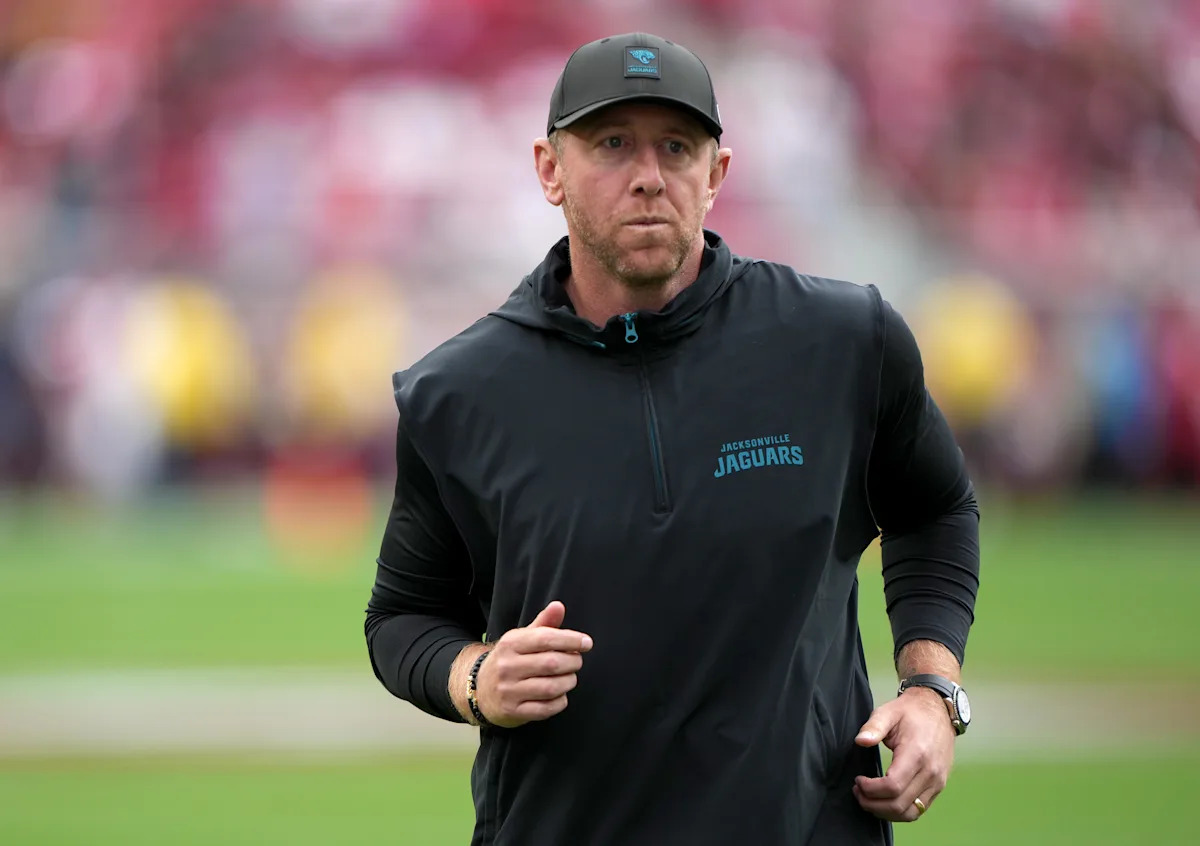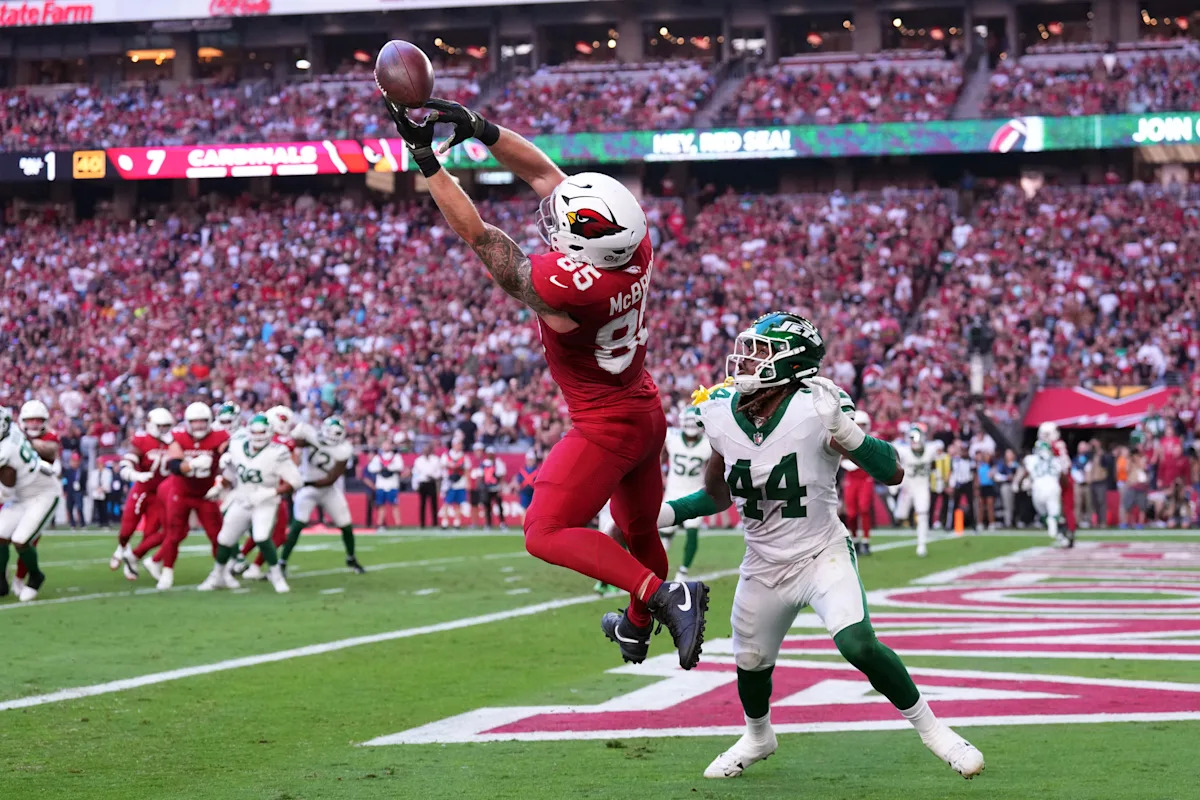
I love going to gaming conventions.
I know. Shocker, right? The guy with an engineering background who writes about fantasy football likes video games. And, yes, seeing new ways to get my sons into RPGs or real-time strategy adventures will always pique my interest. But I’m there for the cosplay.
Advertisement
You can tell who’s into bringing their favorite characters to life by their costume. Anything with LEDs, moving parts, or a frame-altering structure stands out. Or, said differently, we know what matters when we see it. The same is true for the tight end position.
[Join or create a Yahoo Fantasy Football league for the 2025 NFL season]
Our draft strategies around TEs focus on the guys who cosplay as receivers. The traits to prioritize are hard to miss. But only so many make a true difference each season. However, by knowing what to target throughout the draft, you can address the position without impacting your roster.
Taking a TE in the Early Rounds
-
Pros: Weekly upside at a onesie position
-
Cons: Potential for weaker starters at WR or RB
Advertisement
On the one hand, taking an early-round TE makes in-season roster decisions a breeze. You’re only concern is their bye week. Plus, with how often they get the ball, you’ll see their highlights plastered across social media.
Players like Brock Bowers are receivers with a TE designation. They’re the cheat code at the position. Luckily, like most good cosplayers, they’re easy to spot. ‘Athletic’ is the common descriptor. But after looking at the last five seasons of data, I’ll call them ‘opportunistic.’
-
Avg. Target Share (for Top-3 TEs): 21.7%
-
Targets per Route Run: 23.6%
-
Yards per Route Run: 1.97
Since 2020, only four TEs to cap the fantasy season with a top-3 finish have had a target share under 20.0%. Unsurprisingly, their volume and efficiency metrics align with most of our favorite receivers.
Advertisement
Bowers and CeeDee Lamb generated almost the same amount of yards after the catch on a per-reception basis (5.3 and 5.4). Trey McBride (8.7) saw more targets per game than Amon-Ra St. Brown (8.1). And George Kittle ranked fourth amongst receivers and TEs in . All three would’ve had top-20 seasons in PPR leagues if they had a “WR” next to their name. However, if you want one of them this year, you’ll have to pay up.
Table of Projected Total Points by Round for RB/WR.
I talked about being cognizant of opportunity cost last week as I went over my . Essentially, we’re giving up a shot at a starting RB or WR to fill a onesie spot. And our chances of hitting on a productive player diminish each round. But if the data doesn’t sway you, let’s play a game of Either/Or.
Advertisement
-
Either Brock Bowers or one of Drake London/Bucky Irving
-
Either Trey McBride or one of Ladd McConkey/Chase Brown
-
Either George Kittle or one of Tee Higgins/James Cook
By , the early-round TEs will force you to choose between them and a weekly staple at either core position. But there’s a workaround. Contextualizing each player’s potential workload allows you to find one or multiple options later with a similar range of outcomes. Instead of Chase Brown, draft Kenneth Walker (for rushing volume) and James Conner (with pass-catching upside). As a result, you can escape the first six rounds with a high-end TE along with a viable nucleus of WRs and RBs.
[Subscribe to Yahoo Fantasy Plus and unlock Instant Mock Drafts today]
Other Early-Round Options: Mark Andrews, Ravens
Drafting a Mid-Round TE
-
Pros: Enables a strong starting roster with minor depth
-
Cons: Weekly projections will favor holding your TE despite weak production
Advertisement
I went to once dressed as a Black Mesa scientist (shoutout to my nerds who know the reference). All I needed was a lab coat with the logo on it. I looked sharp, even got some comments. But I wasn’t anything compared to the guy with a full-on Transformers costume.
Like my attempt at cosplay, mid-round TEs are the next best thing to the elite options. They play the part well, but they’ve got at least one glaring issue keeping them out of the early rounds. Last year’s TE10 is a perfect example.
First off, I wasn’t a Motorhead fan before today. I get it now. Anyway, Tucker Kraft exploded onto the scene as the value TE to draft. His signaled he could be a menace on the field. And the South Dakota State product delivered. Kraft’s absurd average of 9.3 yards after the catch per reception is the second-most of any TE over the last 10 years. The only problem is his situation.
Advertisement
-
Target Share: 15.1%, 13th (out of 27 qualifying TEs, min. 50.0% route rate)
-
Targets per Route Run: 16.1%, 21st
-
Yards per Route Run: 1.63, 6th
Kraft is part of an offense featuring multiple WRs, sitting around the league average in pass rate over expectation. Simply put, the pie is small, and so is his slice of it. But you can find warts on his peers.
Zach Ertz saw the seventh-most targets of any TE, but () has trouble generating more yards past the catch. A.J. Brown and DeVonta Smith keep Dallas Goedert’s ceiling in check. Kyle Pitts … never mind. However, the silver lining is their usage in the red zone.
-
Zach Ertz: 26 (RZ targets), T-3rd (out of 27 qualifying TEs, min. 50.0% route rate)
Falling into the end zone (with the ball) is what gives a mid-round TE fantasy relevance. For the tight ends in the back half of 2024’s top 12, touchdowns alone accounted for 18.8% of their scores. David Njoku’s five scores allowed him to sneak into the TE11 spot after nearly matching career lows in receiving efficiency. Cole Kmet finding the paint seven times in ’22 propelled him to TE8 despite only having 544 receiving yards on the season. In either case, identifying TEs that are still a part of the passing game when their team is in scoring position offers not only a weekly floor, but access to a ceiling with top-12 upside each week.
Advertisement
Other Mid-Round Options: Jake Ferguson, Cowboys; Tyler Warren, Colts; Chig Okonkwo, Titans
Gambling at TE in the Late Rounds
-
Pros: Supports a (mostly) full roster build with starters and depth
-
Cons: Week-to-week variability at TE will require constant matchup evaluation
Consider late-round TEs as matchup-based starters. Every Tuesday night (or whichever night is before your waivers process), you’ll need to look at the defense your starter will face in the coming days. From there, it’s either keep him or stream another in a better environment. However, instead of putting in claims based on vibes, I’ve got some math to guide you.
-
Target Share: 0.62 (r-squared)
-
(Team-Level) Yards per Drive: 0.18
-
(Team-Level) EPA per Play: 0.12
-
(Team-Level) Pass Rate Over Expectation: 0.11
I ran a study using five years of data to examine the correlation between each metric and fantasy points. The closer to 1.0, the stronger the connection. Intuitively, more targets get you more points. Surprisingly, their team situation isn’t much of a factor. However, most (read all) of the TEs with secure target shares are off the board. So, let’s drop down to another stat worth valuing.
Advertisement
Routes signal intent by a play-caller to have a receiver involved in a play concept. Afterward, it’s on the player to get the ball thrown their way. But it won’t happen with them on the sideline. Accordingly, we have to do some detective work to see which TEs will even be on the field. Practice reports can help in this regard.
Yes, the Jets’ offense is a at best. However, Mason Taylor profiles as an for Justin Fields on a team featuring 30-year-old Josh Reynolds and Tyler Johnson, who signed a $1.3M contract in free agency. In other words, Taylor’s potential to see the field should be high. We’ll need to see his rapport with Fields to assess his value over the season, but starting with his participation within the offense should be our first clue.
Other Mid-Round Options: Theo Johnson, Giants; Ja’Tavion Sanders, Panthers
#Fantasy #Football #Draft #Strategy #Focus #players #cosplay #wide #receivers

